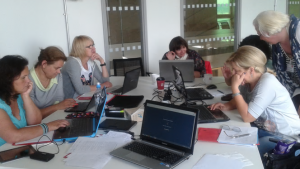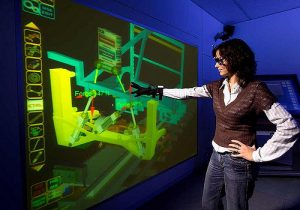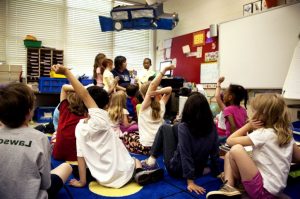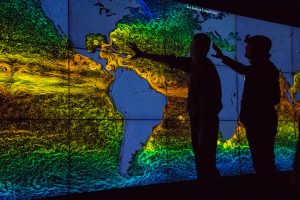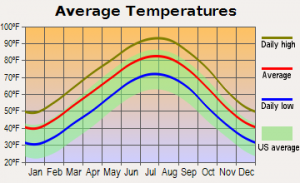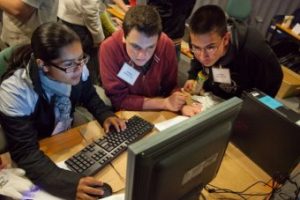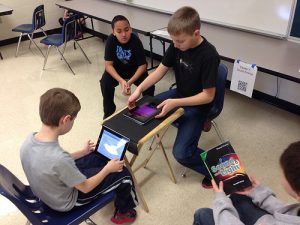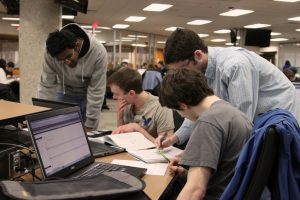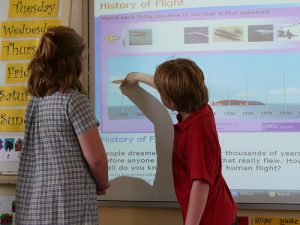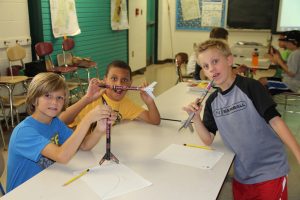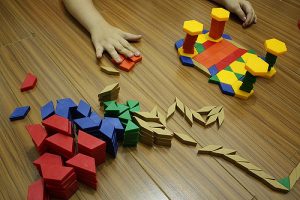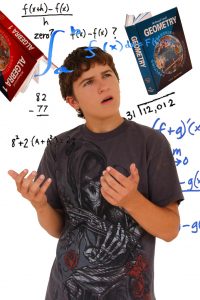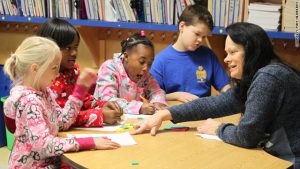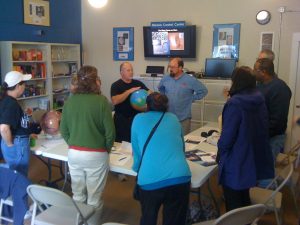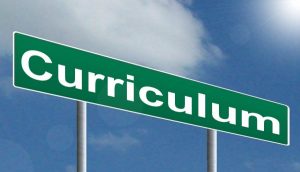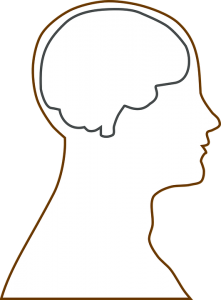Through an analysis of my ongoing e-folio there are a few different themes that I notice and that I can reflect upon as I continue to integrate technology into my math and inquiry teaching. As an elementary educator I do not currently teach the science strand as we have planning teachers that do this, but I am teaching math and since I teach with an inquiry based approach there are many ways that science related activities are incorporated in my teaching throughout the day in a cross curricular approach.
The idea of a constructivist approach not only fosters knowledge generation but allows the students to take charge of their learning and allows students to find a pathway to their learning that is more meaningful. In this way, constructivist activities allow for student led learning, with teacher as facilitator. As Kozma (2003) notes, teachers are not the disseminators of information but rather act as the “guide on the side”, providing planning, structure and ongoing check-ins and assessment for learning.” With this type of learning, the educator must have proficiency using technology tools and platforms in different ways, so ongoing collaboration between educators as well as ongoing training would be an important piece of this puzzle. As Schulman (1986) noted in his research, teacher training and the type of training provided needs to be revised to reflect both content and pedagogical knowledge so that educators are prepared to effectively integrate technology into their math and science classrooms.
This link between educator proficiency, technology tools and supports is a recurring theme that is important when considering technology in the math and science classroom. Students require scaffolding when using many of these tools or designs but we must also remember that the educators also require training, scaffolding and to use reflective practice to ensure the platform they have chosen suits the needs of the students and that the platform used is specifically chosen for a purpose, and not just to “add” technology to the classroom. In this setting, students would be encouraged to work collaboratively and to reach findings and to use technology to its full capabilities including analysis, problem solving, designing and implementing. Questions educators must ask are: Do I require more training so that I can integrate these technologies into my math and science program? How can I provide proper scaffolding/pedagogical practices to support the students as they use the technology? How will I know that the technology has added to the students’ knowledge generation?
Schulman (1986) speaks to the distinction between knowledge and pedagogy. Three important questions can be asked as we as educators reflect on our teaching in math and science:
- How are decisions about teaching made?
- How do I represent content?
- How do I question students and how do I deal with problems of misunderstanding?
These ideas fit well when considering the different learning environments that technology can provide to engage students in robust learning activities and knowledge construction. The learning environments explored in this course including, Anchored Instruction/Jasper, SKI/WISE, LfU/MyWorld and T-Gem/Chemland all provide opportunities for students to construct their own knowledge through the use of technology. As an educator, I would choose the platform depending on the needs of my students, the curricular goals and the availability of the technology. I would also take into account the time to complete these in a meaningful way. Analysing these learning environments provided me with more insight into the benefits and possible drawbacks of each platform. Some of the proposed benefits of using these learning environments include the ability for students to use complex problem solving, communication and collaboration are fostered, scaffolding is integrated into most of the platforms, many are customizable and adaptive and reflections are built in. The educator acts as facilitator, gently guiding the students through the learning process. Students have the ability to explore relationships and use reasoning skills within these learning platforms and some have integrated data analysis and record keeping abilities which help students explore concepts more fully.
As an elementary educator I was drawn to using Anchored Instruction/Jasper with younger students. I think the videos could be tailored to elementary science/math curriculum and that the technology-based learning approach which stresses the importance of placing learning within a meaningful, problem-solving context (video stories) would be meaningful for students. In addition, the T-GEM/Chemland technology supported learning where students generate ideas, evaluate ideas and modify based on discrepancies discovered would also be beneficial for younger students. These two learning environments would be accessible, could be tailored to the age/understandings of the students and would provide a technology driven environment that could be explored successfully with the teacher as the guide on the side.
I do think that each technology supported environment provides its own “positives” depending on the style of the educator, the needs of the students, the age of the students and access to technology. In addition, timelines must be considered and I believe each of these requires more time to allow students to find relationships, deepen their understandings, communicate with each other and reflect on their learning’s, and even more time if they are to apply these understandings in real-world contexts. These considerations can be stumbling blocks especially in elementary settings where we are required to teach many subjects and devote enough time to teaching them well. Cross curricular approaches seem to be the best solution to this, but they require more planning and the assessment may be less linear. That being said it cannot be understated that these environments provide deep, rich understandings. In addition, I would like to add that supporting and educating teachers to use these valuable resources should be a goal so that science/math education can continue to support deep, engaging and meaningful learning for students.
Through my research I also examined how these technology platforms could assist students with learning disabilities in the mathematics classroom. Of particular interest was that detailed curriculum design and teaching practices result in enhanced mathematics. The researchers focussed on the essential attributes of effective practice. They went further and defined “explicit instruction”, which in previous research has shown positive effects in terms of increased understanding of mathematical skills for students with learning disabilities. The researchers broke it down into three components: (a) The teacher demonstrated a step-by-step plan (strategy) for solving the problem, (b) this step-by-step plan needed to be specific for a set of problems (as opposed to a general problem-solving heuristic strategy), and (c) students were asked to use the same procedure/steps demonstrated by the teacher to solve the problem (Gersten, Chard, Jayanthi, Baker, Morphy & Flojo, 2009). The two instructional components that provided significant benefits were teaching students to use heuristics (a process or method) to solve problems and explicit instruction (Gersten et al., 2009).
So, reflecting on the Jasper series and other technology tools discussed, perhaps introducing complex problems that students have to work through may be of benefit to some students but not all. This is why we, as educators need to be selective when using these technologies in our math and science classrooms. From this research it appears that students with learning disabilities would not benefit from the Jasper adventures which are purposely created to reflect the complexity of real world problems (Cognition and Technology Group at Vanderbilt, 1992). Before we use these technologies carte blanche in our classrooms we need to consider the diverse needs of our students first.
It appears that teachers and students also benefit if the teachers are given specific guidance on addressing instructional needs or curricula so that they can immediately provide relevant instructional material to their student. This is an important point to discuss as educators are often expected to know what to do in all situations with a variety of different styles of learners, with a variety of curriculum and with a variety of learning abilities.
Another theme throughout my e-portfolio and in science specifically, is that it has been found that students have many misunderstandings developed either through experiences, concepts or examples (Linn, M., Clark, D. & Slotta, J., 2003). The use of technology in the science classroom can be one way to alleviate these misunderstandings.
For example, research notes that although light is an everyday phenomenon that we constantly observe, students often display learning difficulties and hold unscientific understanding on physics concepts of light wave (Srisawadi & Kroothkeaw, 2014). In addition, concepts of light such as its speed and wave length are removed from the range of perceptions of the human senses, and so optics instruction can be subject to interpretation, so there is a need for careful consideration in physics teaching process (Srisawadi & Kroothkeaw, 2014). Computer simulations can broach this divide. Computer simulations can enhance generating relationships and allow students and teachers the opportunity to view trends, variables and visual representation in more concrete ways which may lead to more accurate conceptual understandings (Khan, 2011).
Using T-GEM principles the educator can lead the students through generating ideas, evaluating these ideas and modifying them based on the discrepancies discovered. Online simulations, modelling or other visual representations can help to reach these aims.
In addition, research has shown that role play with elementary school students enables them to adopt different identities and act out their fictitious roles and allows students to have the opportunity to think differently and question their prior beliefs. (Lin, Chiu, Hsu & Wang, 2015). In one study, a computer-supported role-playing game was used which provided clear directions for the assigned roles and forced the students to consider different view of controversial issues. When students’ prior beliefs were inconsistent with their assigned roles, it led to conflict, which then had the possibility of inspiring new perspectives, and so enhancing their abilities to construct an argument ( Lin et.al, 2015).
When identifying misconceptions, educators should be aware that these can also be fostered through the use of certain technologies. For example, when considering virtual reality in the science or mathematics classroom, research shows that students may misinterpret or overlook important information in a simulation and teachers may be tempted to believe that simulations are automatically effective in communicating complex models to students (Stephens & Clement, 2015). Following this, in order to support knowledge generation teachers need to support students to promote reasoning and comprehension during use of simulations. As part of this, research has suggested that many teachers may need more guidance provided along with simulations to help them identify which features and relationships may be overlooked by students (Stephens & Clement, 2015). Virtual reality alone will not suffice and educators require information and guidance on how to support learners through the science knowledge generation process in networked communities.
WISE curriculum projects attempt to broach scientific misunderstandings through promoting knowledge integration through providing inquiry projects which are flexible, customizable and adaptive. In this way WISE is a bottom up approach rather than a top down approach and is meeting the educational goal of delivering curriculum in a differentiated way, which is one of the goals of education.
Further to this, many WISE inquiry projects have been designed with detailed steps for the first inquiry investigation and then providing less detailed steps in subsequent projects. In this way students are able to move from supported learning to more independent pathways. This method is debated. When considering the Jasper Series, the belief that students can develop basic skills in the context of meaningful problem posing and problem-solving activities rather than isolated “targets” of instruction seems to refute this. That being said, the Jasper Series coincides with WISE with its emphasis on complex, problem solving, communication and reasoning and in connecting mathematics to the world outside the classroom. (Cognition and Technology and Technology Group at Vanderbilt, 1992).
In reflection, the technology tool used should be carefully chosen to meet the needs of the students and the aims of the educator. In addition, a look at the curriculum can also lead an educator to choose one learning environment over another. Do the students require a more step-by-step scaffolded approach or are they ready for problem-solving activities where the learning happens as they work through the problem? Perhaps the answer to this lies in the pedagogical approach of the educator. If we have prepared the students to work in both types of environment before introducing the technology they may be able to manage either environment. So a mix of scaffolded linear style teaching and learning and a problem-solving approach will provide the best opportunity for students to learn in a myriad of ways.
Student engagement is another theme I noted throughout my portfolio. For example in the (LfU) Learning for Use environment the learning task aims to promote discussion about the science concept explored and to promote communication. The LfU reasoning for this is to elicit curiosity and to have students confront limitations in their understandings (Edelson, 2001). It is noted in other literature that students are not likely to change their understandings in science until they notice contradictions to existing ones and that constructing relationships is a way to breach this divide (DeLaughter, Stein, Stein & Bain, 1998). LfU design creates demand for learning and eliciting curiosity. In the Create-a-World project the students are required to create a fictitious world, and this would be the impetus for learning about temperature and climate.
So, eliciting curiosity through identifying potential misconceptions and for activating existing knowledge can be achieved with technology. Technology can provide simulations which may be unavailable to direct observation (Edelson, 2001). Technology may also provide ways to articulate and demonstrate concepts using, for example, drawing programs. Eliciting curiosity may not happen with traditional style lecture or through textbooks which often tend to be outdated or misrepresent scientific concepts.
Role play can also be developed in the science classroom as a way for students to engage with their learning, learn to understand and share alternate perspectives, and foster communication, problem solving, decision making and critical thinking skills. For example In one role play and case study to research environmental science students added to their science content knowledge through research or inquiry investigations about a local issue through examining environmental issues in their agricultural community (Deaton & Cook, 2012). The goal of this role play/case study could be enhanced through TELE. As part of the study students were required to research science content, and participate in role-playing which could be enhanced through well designed simulations or virtual reality.
In summation, it is the educator who is an integral part of creating the environment in which knowledge generation can occur in the math and science classroom. The educator must consider his/her own personal needs in terms of training or supports that may be required to effectively use technology in the classroom. The educator must also consider the needs of the students and how technology can be incorporated effectively and with purpose. The educator needs to know when to gently guide students through their learning and to identify and mitigate misunderstandings if and when they occur. The educator must consider how to keep the students actively engaged in their learning so that knowledge can be generated. The educator needs to understand how to use a variety of technology tools to help facilitate discussion, collaboration and reflection. The educator must work towards providing a differentiated environment when using technology, so that all students including those with learning disabilities benefit. In addition, the educator must critically examine the technology used to ensure it is not creating more misconceptions, and this is done through assessing on an ongoing basis throughout the process and making corrections as necessary.
References
Cognition and Technology Group at Vanderbilt (1992). The jasper experiment: An exploration of issues in learning instructional design. Educational Technology Research and Development,40 (1). pp. 65–80.
Deaton, C., Dodd, K., Drennon, K., & Nagle, J., (2012). “Prey play”: Learning about predators and prey through an interactive, role-play game. Science Activities: Classroom Projects And Curriculum Ideas 49, 4. pp 128-137.
DeLaughter, J. E., Stein, S., Stein, C. A., & Bain, K. R. (1998). Preconceptions abound among students in an introductory earth science course. EOS Transactions, 79 (36), 429-436.
Edelson, (2001). Learning for use: A framework for the design of technology-supported inquiry activities. Journal of Research in Science Teaching. 38 (3), 355-385.
Gersten, R., Chard., D.J., Jayanthi, M., Baker, S.K., Morphy, P., Flojo, J. (2009). Mathematics instruction for students with learning disabilities: A meta-analysis of instructional components. Review of Educational Research, 79(3), 1202-1242.
Khan, Samia (2011). New pedagogies on teaching science with computer simulations. Journal of Science Education and Technology 20, 3 pp. 215-232.
Lin, C.H., Chiu, C.H., Hsu, CC., & Wang, I.T., (2015). The influence of playing for or against a controversial position on elementary students’ ability to construct cogent arguments. Asia Pacific Education Researcher 24: 409. doi: 10.1007/s40299-014-0193-2
Linn, M., Clark, D., & Slotta, J. (2003). Wise design for knowledge integration. Science Education, 87 (4), 517-538.
Robert B. Kozma (2003) Technology and Classroom Practices, Journal of Research on Technology in Education, 36:1, 1-14, DOI: 10.1080/15391523.2003.10782399
Shulman, Lee S. (1986). Those who understand: Knowledge growth in teaching. Educational Researcher, 15, 2, pp. 4-14.
Srisawasdi, N. & Kroothkeaw, Supporting students’ conceptual development of light refraction by simulation-based open inquiry with dual-situated learning model. S. J. Comput. Educ. (2014) 1: 49. doi:10.1007/s40692-014-0005-y
Stephens, A., & Clement, J. (2015). Use of physics simulations in whole class and small group settings: Comparative case studies. Journal of Computers & Education. 86, C, pp. 137-156.

